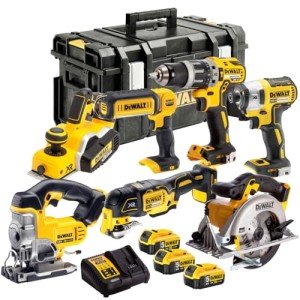10 Tool Kit Builder Related Projects That Can Stretch Your Creativity

The Essential Tool Kit Builder: Crafting Your Ultimate Toolkit for Success
In any profession or pastime, having the right tools can make all the distinction. From construction to art, education to tech startups, a sound toolkit not only helps in accomplishing tasks efficiently but likewise improves creativity and productivity. In this post, we will check out the aspects of a wonderful tool kit, how to build one tailored to your particular needs, and resolve some often asked concerns relating to tool kit building and construction.
Why Building a Tool Kit is Essential
A tool kit, no matter the context, functions as a curated collection of resources that enhance procedures, fix issues, and elevate results. The following table describes the advantages of having a well-structured tool kit:
| Benefits of a Tool Kit | Description |
|---|---|
| Efficiency | Lowers time invested looking for tools or resources. |
| Quality | Boosts the quality of output through best-in-class tools. |
| Innovation | Fosters imagination by providing varied resources. |
| Ease of access | Centralizes everything in one location, making it easy to access needed tools anytime. |
| Skill Development | Motivates finding out brand-new strategies and improving existing abilities through diverse tools. |
Steps to Build Your Tool Kit
Constructing a tool kit involves evaluating your requirements, looking into potential tools, and organizing them efficiently. Here's a structured method:
1. Determine Your Goals
Start with a clear understanding of what you wish to accomplish with your tool kit. Note your short-term and long-term goals:
- Short-Term: What immediate tasks will the toolkit assist in?
- Long-Term: What skills or tasks may it help establish in the future?
2. Assess Your Current Tools
Evaluation any existing tools you have. Recognize gaps and locations for enhancement. Produce a table to compare what you have versus what you require.
| Current Tools | Gaps | Potential Tools Needed |
|---|---|---|
| Hammers | Missing a sledgehammer | Sledgehammer |
| Screwdrivers | No accuracy screwdrivers | Precision screwdriver set |
| Paintbrushes | Minimal sizes | Variety of paintbrush sizes |
3. Research study
Investigate and collect info on different tools that fit the requirements you've identified. Consider quality, resilience, and user evaluations.
4. Categorize Tools
Once you have a thorough list, categorize your tools based on their usage. Typical classifications might include:
- Basic Tools: Hammers, screwdrivers, pliers
- Power Tools: Drills, saws, sanders
- Specialty Tools: Laser levels, woodworking jigs
- Digital Tools: Software platforms, apps, online resources
5. Arrange and Store
Create a storage option for your tool kit. This can vary from a toolbox with compartments to cloud storage for digital tools. Organizing Power Tools Online can increase your effectiveness. Here are some storage services:
| Storage Solution | Advantages | Best For |
|---|---|---|
| Tool kit | Portable, protected | Physical tools |
| Wall-mounted racks | Space-saving, shows tools | Workshops, garages |
| Cloud storage services | Remotely available, collective | Digital tools and files |
6. Review and Update Regularly
A tool kit is not a fixed entity. Frequently examining and upgrading your toolkit can assist you remain current with patterns and technologies.
Example Toolkit for Various Fields
To give you a clearer idea of what a tool kit might appear like in practice, here are examples for three unique occupations:
1. A Teacher's Toolkit
| Tool | Function |
|---|---|
| White boards markers | Mentor and brainstorming |
| Projector | Visual presentations and multimedia |
| Class apps | Interactive learning and assessments |
| Organizational tools | Lesson preparation and tracking |
2. A DIY Home Improvement Kit
| Tool | Purpose |
|---|---|
| Cordless drill | Easy setup and assembly |
| Level | Ensuring straight lines and accuracy |
| Measuring tape | Exact measurements |
| Paint materials | Aesthetic updates to spaces |
3. A Digital Marketer's Toolkit
| Tool | Function |
|---|---|
| SEO software application | Optimizing website visibility |
| Social media management tools | Scheduling and tracking posts |
| Material creation tools | Designing fascinating visuals |
| Analytics software | Determining performance and ROI |
Often Asked Questions (FAQ)
Q1: How often should I update my tool kit?
A: It is advised to evaluate your tool kit regularly-- at least one or two times a year-- depending upon changes in your field or advancements in innovation.
Q2: Can a tool kit be both physical and digital?
A: Absolutely! Numerous specialists integrate both physical and digital tools to optimize their performance in different jobs.
Q3: How do I decide which tools are essential for my toolkit?
A: Prioritize tools based on your goals and requirements. Research study and seek suggestions from knowledgeable professionals in your industry.
Q4: Is it needed to purchase high-end tools?
A: While high-end tools frequently use better toughness and performance, you don't constantly need the most pricey alternatives. Evaluate quality through reviews and think about mid-range tools if you're on a spending plan.
Q5: Can I personalize my tool kit in time?
A: Yes! A tool kit ought to evolve based upon your growing skills, changing needs, and developments in technology.
Building an effective tool kit can be a transformative endeavor, no matter the field. By tactically collecting tools, arranging them effectively, and frequently updating your choices, you can create a trustworthy resource that boosts your professional or individual undertakings. Whether you are a teacher, a home DIYer, or a digital marketing expert, a durable toolkit is vital for achieving your goals and surpassing expectations. Start the process today toward crafting your own ideal tool kit and view your imagination and efficiency soar.

